TL;DR:
Integrating price action and trading volume analysis is essential for understanding market dynamics and making informed trading decisions. Price action analysis involves studying price patterns and candlestick formations, while trading volume analysis focuses on the volume of trades. By combining these two elements, traders can confirm trends and reversals, spot breakouts and fakeouts, assess market sentiment, and identify support and resistance levels. Integrating price action and trading volume analysis provides a comprehensive view of the market, helping traders make more accurate predictions and improve their trading strategies.
Introduction
In the dynamic world of cryptocurrency trading, understanding price action and trading volumes is essential for making informed decisions. These two key elements provide valuable insights into market trends, investor sentiment, and potential price movements. As a professional crypto trader, I have witnessed firsthand the power of analyzing price action and trading volumes in successfully navigating the crypto market. In this article, I will delve into the art and science of analyzing price action and trading volumes, offering advanced insights and strategies for mastering this crucial skill. So, let’s dive into the fascinating world of price action and trading volumes and explore how they can shape your crypto trading journey.
Understanding Price Action: The Language of the Market
Price action refers to the movement of a cryptocurrency’s price over time. It encompasses patterns, trends, support and resistance levels, and other factors that influence price movements. By studying price action, traders can gain valuable insights into market dynamics and make more informed trading decisions. Let’s explore some key aspects of price action analysis:
Candlestick Patterns
Candlestick charts are a popular tool for analyzing price action. These charts display price movements within a specific timeframe using candlestick shapes and colors. Different candlestick patterns, such as doji, engulfing, and hammer, provide visual cues about market sentiment and potential price reversals. By recognizing and understanding these patterns, traders can identify entry and exit points with higher accuracy.
Support and Resistance Levels
Support and resistance levels are psychological price levels where the buying or selling pressure tends to become stronger. Support levels act as a floor for prices, preventing them from falling further, while resistance levels act as a ceiling, preventing prices from rising. By identifying these levels through price action analysis, traders can anticipate potential price reactions and adjust their trading strategies accordingly.
Trend Analysis
Trends play a vital role in price action analysis. By identifying the direction and strength of trends, traders can ride the momentum and increase their chances of profitable trades. Trends can be classified as uptrends, downtrends, or sideways trends. Utilizing various technical indicators, such as moving averages and trend lines, traders can confirm and validate trends observed in price action analysis.
To illustrate the power of price action analysis, let me share a personal story. A few months ago, I was analyzing the price action of a popular cryptocurrency, let’s call it “CryptoX.” The price had been in a steady uptrend, forming a series of higher highs and higher lows. By observing the candlestick patterns and support and resistance levels, I identified a potential breakout above a strong resistance level. Recognizing the bullish price action, I entered a long position on CryptoX. As anticipated, the price broke out, and I was able to capture a substantial profit. This example highlights the importance of price action analysis in identifying profitable trading opportunities.
Understanding Trading Volumes: The Fuel Behind Price Movements
Trading volumes provide crucial information about the participation and liquidity in the market. Volume refers to the number of shares or contracts traded within a given period. Analyzing trading volumes alongside price action can uncover valuable insights into market trends and potential price reversals. Let’s explore some key aspects of trading volume analysis:
Volume Analysis
Volume analysis involves studying the relationship between price movements and trading volumes. In an uptrend, rising volumes during price advances signal strong buying interest and support the upward movement. Conversely, in a downtrend, rising volumes during price declines indicate strong selling pressure. By analyzing volume patterns, traders can gauge the strength of a price movement and identify potential market turning points.
Volume Indicators
Various volume indicators can be used to enhance volume analysis. For example, the On-Balance Volume (OBV) indicator tracks cumulative volume to determine the flow of money into or out of a cryptocurrency. High OBV values suggest buying pressure,.
while low OBV values indicate selling pressure. Another commonly used volume indicator is the Volume Weighted Average Price (VWAP), which calculates the average price weighted by trading volume. Traders often use VWAP to assess the fair value of a cryptocurrency and identify potential support or resistance levels.
Volume Divergence
Volume divergence occurs when there is a disagreement between price movements and trading volumes. For example, if the price is rising, but the volume is decreasing or flat, it could indicate weakening buying pressure and a potential trend reversal. Similarly, if the price is falling, but the volume is increasing or stable, it could suggest increasing selling pressure and a possible trend continuation. By spotting volume divergences, traders can anticipate market shifts and adjust their trading strategies accordingly.
Volume Profile
Volume profile is a graphical representation of trading volumes at different price levels. It provides insights into areas of high and low liquidity, as well as support and resistance levels based on trading volumes. Traders can use volume profile to identify significant price levels and potential breakout or reversal zones. By combining volume profile analysis with price action, traders can make more informed decisions about entry and exit points.
Let me share another real-life example to highlight the importance of trading volume analysis. A few weeks ago, I was analyzing the trading volume of a promising altcoin. The price had been in a consolidation phase, moving within a narrow range. As I studied the volume patterns, I noticed a significant spike in trading volume accompanied by a bullish candlestick pattern. This surge in volume indicated increased buying interest and the potential for a breakout. I entered a long position based on this volume analysis, and shortly after, the price broke out and continued its upward move. This example demonstrates how analyzing trading volumes can provide valuable insights and improve trading decisions.
Integrating Price Action and Trading Volume Analysis
To maximize the effectiveness of your analysis, it’s crucial to integrate both price action and trading volume analysis. These two elements complement each other and provide a more comprehensive view of market dynamics. Here are some strategies for integrating price action and trading volume analysis:
Confirming Trends and Reversals
When identifying trends or potential trend reversals, consider the correlation between price movements and trading volumes. In an uptrend, increasing volumes during upward price movements validate the strength of the trend. Conversely, decreasing volumes during price advances could suggest a weakening trend. Similarly, in a downtrend, rising volumes during price declines confirm the downward momentum, while decreasing volumes during price drops may indicate a potential reversal. By aligning price action signals with corresponding volume patterns, traders can increase their confidence in trend analysis.
Spotting Breakouts and Fakeouts
Breakouts occur when prices move beyond a significant level of support or resistance. By combining price action analysis with trading volume analysis, traders can identify breakouts with higher accuracy. A valid breakout should be accompanied by a surge in trading volume, indicating strong participation and conviction in the market. On the other hand, fakeouts, or false breakouts, often occur when prices briefly move beyond a support or resistance level but fail to sustain the momentum. Fakeouts are usually characterized by low trading volumes. By considering trading volumes alongside price action during breakout scenarios, traders can filter out potential fakeouts and focus on genuine breakout opportunities.
Assessing Market Sentiment
Price action and trading volumes can provide valuable insights into market sentiment. For example, during a strong uptrend, rising prices accompanied by high trading volumes suggest positive market sentiment and strong buying interest. Conversely, in a downtrend, falling prices coupled with high trading volumes indicate negative sentiment and increased selling pressure. By analyzing the relationship between price action and trading volumes, traders can gauge market sentiment and adjust their trading strategies accordingly.
Identifying Support and Resistance Levels
Support and resistance levels are crucial reference points for traders. Combining price action analysis with trading volume analysis can help identify significant support and resistance levels more effectively. Areas of high trading volumes can indicate strong support or resistance, as they represent zones where market participants have previously shown significant interest. By considering both price action and trading volumes at these levels, traders can make more informed decisions about entering or exiting positions.
In conclusion, integrating price action and trading volume analysis is a powerful approach for understanding market dynamics and making informed trading decisions. By studying price patterns, candlestick formations, and volume patterns, traders can gain valuable insights into market trends, reversals, breakouts, and market sentiment. Remember to practice and refine your skills through experience and continue learning to enhance your analysis capabilities.

















